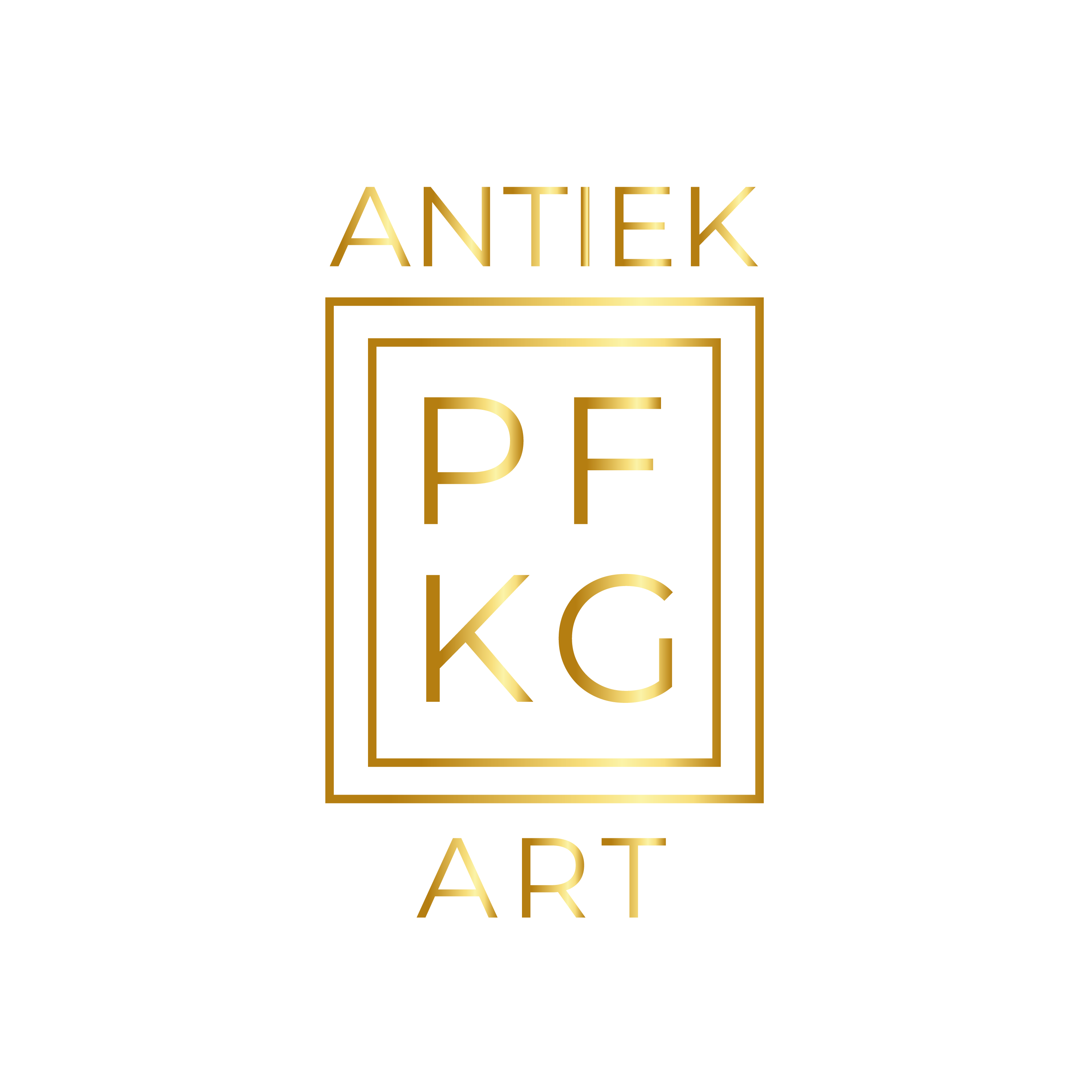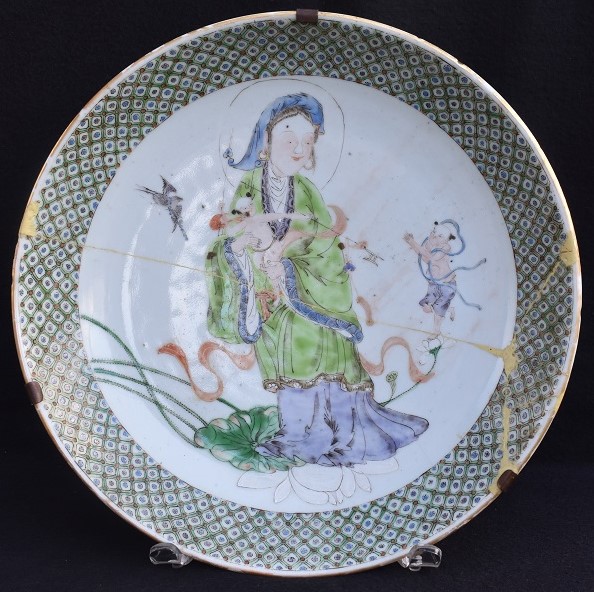Large plate famille verte with Guanyin figure with child, mid 19th century
Ø 35.5 cm H 6.5 cm
€ 1.100,00
Prijs incl. 6% BTW & Verzendingskosten
Meer informatie
Kintsugi (金継ぎ: ‘golden connection’), also called Kintsukuroi (金繕い: ‘golden repair’), is the Japanese art of repairing broken ceramics with gold or silver lacquer. Kintsugi’s philosophy was developed from the Japanese life wisdom wabi-sabi (侘寂), the teaching of modesty and beauty of the ephemeral, the weathered and the imperfection. In Japanese aesthetics, the traces of breakage and repair add to the beauty of an object. Before the emergence of kintsugi, it was common to repair broken precious ceramics with metal staples. For this purpose, small holes were drilled on either side of the fracture.[2][a] Kintsugi was developed in Japan in the late 15th century and over time was also widely used in China, Vietnam and Korea. According to legend, the Japanese shogun Ashikaga Yoshimasa sent a broken teapot back to China in the 15th century to have it repaired. The teapot returned, but had been entertained with little love: the fracture lines were held together only by metal staples, as was then customary in China. For the repair, maki-e is used, a Japanese lacquer sprinkled or mixed with gold, silver or platinum. Broken or cracked ceramics are repaired in several stages and is a lengthy process. The Japanese urushi lacquer is applied in several layers, possibly sprinkled with gold or silver pigments and then polished. On display is a beautiful and rare Chinese porcelain large round plate, restored according to the old Japanese Kintsugi technique. The cracks and lost parts are filled with maki-e lacquer and sprinkled with gold powder. On the shelf is a large famille verte hand-painted Guanyin figure, this on top of a white pate and glaze. The guanyin figure, with a light blush on the face, wears a blue hairdo and a long robe in various shades of green, purple, black with a gilded light brown scarf. She carries a naked child in both arms. The Chinese child holds a black and gold-painted rod in his left hand. The guanyin figure stands on a lotus plant with green leaves and petals painted in white enamel. To the right of it is another child, also in skin color, standing on one leg, wearing purple pants. We also see a bird in the sky in the top left corner. The border is beautifully painted with a frieze of green diaper35.5 pattern all around, filled in with blue and purple flowers and red dots on the corners. The lip is gilded but this is worn away here and there. The back is glazed with the exception of the rounded base ring. On the outside of this foot ring, a copper ring has been fitted all around with wide bands and a hanging ring that run to the edge and make it possible to hang the board. The sign is not marked. It has all the hallmarks of a 19th century plate, possibly from the Daoguang (1820-50) period, mid 19th century. This is an extremely rare and museum masterpiece.
Condition: beautiful Kintsugi restoration, gold on the lip somewhat worn, light fritting on the edge, otherwise well preserved.


Reviews